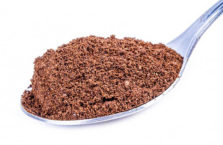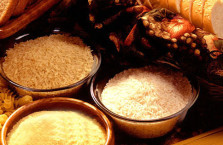Chances are right now you are mismanaging your Carb intake creating a halt in muscle gain and fat loss. Carbohydrate ingestion is quite possibly one of the most misunderstood concepts in fitness. So whats up with carbs and concepts like carb cycling, reverse dieting, refeeding? What do they all mean?!
The same hormones that help build muscle can also add fat to the body. Tactically control these hormones with diet for fast body comp improvements. The amount of carbs you consume each day will be based upon the priority of your workout. Your high carb days, low carb days, and moderate carb days will be based upon how often you train.
Don’t let the hype confuse you. Take out the guess work and calculate how many calories and carbs you’ll need per day given your workout: here’s how.
Ripped and Carbed-Up
Mainstream fitness mythology has done a great job convincing everyone carbs equaled fatness. Try your best to ignore everything you’ve ever hear about carbs and you’ll find the secret to getting ripped, strong, and more muscular simultaneously, week by week.
That’s when I realized that she must be doing something right! Below is a dieting template that used by bodybuilders and personal trainers alike!
The Carb Cycling Approach

This approach allows the athlete to either gain maximum muscle mass without gaining too much fat (sometimes a slight fat loss is even possible) or to get into contest shape while maintaining (or even gaining) muscle mass. The strategy isn’t complicated, and quite possibly may be the most effective dieting tool ever developed.
The Logic Behind the System
There are two inevitable truths when it comes to building muscle or losing fat:
- To increase body mass you need to consume more calories than you use.
- To lose body fat you need to consume fewer calories than you use.
Obviously, the type of food you ingest will impact the end result. If the bulk of your calories come from junk food, chances are you’ll end up gaining more fat than muscle. Similarly, if the quality of your food intake is low while dieting, chances are you’ll end up losing more muscle tissue.
What you eat is just as important as how much you eat. However, total food intake still remains of paramount importance when trying to either gain muscle or lose fat.
Another thing to consider is the effect of nutrients on hormones and the effect of hormones on muscle gain and fat loss. For example, insulin is one of the most important anabolic hormones in the body.
Insulin directly influences the amount of amino acids and glucose transported into the muscle cells. This is the good stuff, and the more of it you have, the more you grow.
Insulin and Glucagon: What They Do
Insulin is responsible for transporting the bricks to the construction site. It also prevents the mobilization of the nutrients stored in the muscle either as intramuscular glycogen or muscle tissue. In that regard, insulin favors muscle gain and diminishes muscle wasting. This is why insulin is widely used by professional bodybuilders.
However, using exogenous insulin is out of the question for any natural individual remotely interested in avoiding diabetes and premature death. So we must stimulate our body to produce its own insulin, which means consuming a mix of carbs and amino acids.
The pancreas releases insulin in response to a rise in blood glucose, which occurs when consuming carbs and certain amino acids.
Glucagon is insulin’s antagonistic hormone. It promotes the mobilization and utilization of stored nutrients, including glycogen and amino acids. When your diet is lower in carbs, your glucagon increases, putting you into mobilization/breakdown mode instead of building/anabolic mode.
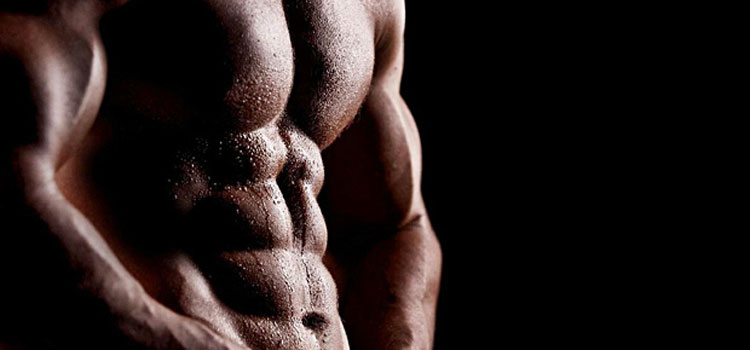
The Problem
Consuming carbohydrates (and producing insulin) is necessary to develop a muscular body. But insulin has an ugly side. A chronically elevated insulin level has a profound effect on the body’s capacity to increase body fat. It can prevent the release of glucagon, promote fat storage, and reduce fat mobilization and usage.
Without ingesting carbs, it’s harder to have intense strength training sessions. It’s true that some amino acids can be “turned into” glucose via gluconeogenesis, and that ketone bodies can be used for fuel after proper adaptation has set in. But a low-to-no carb diet makes you lose your capacity to train hard in the gym.
You also risk losing muscle mass because your body may break down muscle tissue into amino acids to create new glucose. It’ll burn down the walls to heat the house.
The conversion of T4 (thyroxine, the relatively inactive thyroid hormone) to T3 (triiodothyronine, the active thyroid hormone) is greatly impaired when insufficient carbs are consumed. A lower level of T3 leads to a drop in metabolism and this makes fat loss harder.
So to stimulate maximum muscle growth you need carbs, and a relatively high amount to boot. Without ample calories and carbohydrates, it’ll be hard to gain heaps of muscle tissue, even with a high protein intake. But the problem is that eating too much too often can also make you fat.
The First Carb Strategies
1. Bulking and Cutting
The first method used by bodybuilders was to divide their training year into bulking and cutting phases. They’d consume tons of calories and carbohydrates during their bulking phase, then drop their calories and carbs to sub-maintenance levels when entering a cutting phase.
It did allow many people to gain a lot of size, but most of them lost quite a bit of their new muscle during the intense dieting period. Not to mention that those who were cursed with bad insulin sensitivity tended to gain a lot more fat than muscle during “bulking season.” Also, gaining and then losing 20-30 pounds isn’t exactly healthy. It puts a lot of stress on the body and can lead to some health problems.
Finally, from an aesthetic perspective, ballooning up by gaining 15-20 pounds of fat for the sake of gaining 10 pounds of muscle isn’t the best thing to do. We want to look good naked most of the time. Not just a few months out of the year.
2. Cyclical Ketogenic Dieting
Cyclical ketogenic dieting is based on carb deprivation (normally for five straight days) where less than 50 grams of carbohydrates were allowed, followed by one or two days of carbohydrate loading. While very effective at stimulating fat loss, the long period without carbs isn’t conducive to maximum muscle accumulation. In fact, by the second or third day you’re pretty much in a severe catabolic state.
Sure, there’s an anabolic rebound during the loading days. But it can’t compensate for the rest of the week. It’s enough to prevent muscle loss on a weekly basis, but not enough to promote maximum muscle gain.
This method gets great results as far as fat loss is concerned and maybe adding a small amount of muscle, but for better gains is not the best strategy.
3. Carb/Calorie Cycling
Carb cycling or calorie cycling sticks to the basic theory of ingesting carbs only in the morning and after workouts. The only difference is that the amount of calories and carbs consumed will vary each day. Here’s what it does:
- It’ll allow you to include maximum fat burning days and maximum muscle accumulation days in each week.
- It’ll prevent metabolic slowdown by providing frequent caloric spikes.
- It’ll favor long term success because it’s relatively easy to follow, especially compared to the more restrictive ketogenic diets.
The Basic Structure
One sentence summarizes the carb cycling philosophy: “Eat for what you did and have to do.” Carb cycling is based on having three different carbohydrate intake levels during the week: higher carbs, moderate carbs, and lower carbs. Ideally these days are split according to your training schedule.
Choose which option applies to you:
TRAINING 4 DAYS PER WEEK:
- Select your two “priority workouts.” These are the workouts where you’re training the muscle groups you need to improve the most. On these days, you have a high(er) carbohydrate day.
- On the two other workout days, you consume a moderate amount of carbs.
- On the three “off days” you have a lower carb intake.
TRAINING 3 DAYS PER WEEK:
- Select your two “priority workouts.” On these days, you have a higher carbohydrate day.
- The other workout day has a moderate carbohydrate intake level.
- Among the four remaining days of the week, you have one more moderate carb day along with three low carb days.
TRAINING 5 DAYS PER WEEK:
- Select your two “priority workouts” where you’re training the muscle groups you want to improve the most. On these days, you have a higher(er) carbohydrate day.
- Select two “secondary workouts.” On these days you have a moderate carb intake.
- On the remaining workout day and during your “off” days you consume a low(er) amount of carbohydrates.

How to Determine Your Calories and Carbs
When you’ve established your basic structure, you need to set the food intake appropriately. The first thing to do is calculate your TDEE, total daily energy expenditure. That’s the amount of energy in calories you use each day. This baseline figure will be used to set caloric and nutrient intake during the various types of days.
Step #1: CALCULATE YOUR BASAL METABOLIC RATE
Your basal metabolic rate (BMR) simply means the amount of energy used by your body during a 24-hour period if no activity is performed. In other words, if you’re inactive for 24-hours straight, you’d still “burn” the amount of calories equivalent to your BMR. A function of size, sex, and age; BMR is influenced by your metabolic status (hypo or hyperthyroid state for example). We can calculate BMR with the following formulas (by Harris-Benedict):
For Men
BMR = 66 + (13.7 x weight in kg) + (5 x height in cm) – (6.8 x age)
So for a 30 year old bodybuilder of 220lbs (100kg) at 5’11” (178cm) it comes up to:
BMR = 66 + (13.7 x 100kg) + (5 x 178cm) – (6.8 x 30)
BMR = 2122 calories per day
For Women
BMR = 655 + (9.6 x weight in kg) + (1.7 x height in cm) – (4.7 x age)
So for a 28 year old figure girl of 132lbs (60kg) at 5’6″ (165cm) it comes up to:
BMR = 655 + (9.6 x 60kg) + (1.7 x 165cm) – (4.7 x 28)
BMR = 1380 calories per day
STEP #2: Factoring in activity level
The amount of calories found using the Harris-Benedict formula is what your body burns every day, even if you do nothing all day. Obviously, the more active you are the more you’ll burn fuel. So, energy expenditure will be increased when your activity level goes up.
To get an adequate estimation you need to multiply your BMR by an activity level factor:
| Activity Level Factor | Activity Level |
| 1.0 | Sedentary |
| 1.2 | Very light activity |
| 1.4 | Light activity |
| 1.6 | Moderate activity |
| 1.8 | High activity |
| 2.0 | Extreme activity |
*See corresponding meanings below:
Sedentary: doing nothing all day like sleeping and watching TV.
Very light: doing nothing physical, like working a desk job without performing any type of physical activity during your day.
Light: having a non-physical job, but performing some sort of physical activity during the day, like walking, but no hard training.
Moderate: having a non-physical job, performing some sort of physical activity during the day, and including a daily workout session in your routine. This is where most of you are at.
High activity: either training plus a physical job or non-physical job and twice-a-day training sessions. By extreme activity we mean a very physical job and daily hard training.
EXAMPLE:
A 220-pound bodybuilder with a BMR of 2122 calories/day is moderately active, his daily energy expenditure is bumped up to 2122 x 1.6 = 3395 calories per day. This is the amount of calories he’d need to consume to maintain present body weight.
STEP #3: ADJUST CALORIC INTAKE FOR YOUR GOAL
To gain muscle you should ingest more calories than you use up each day. To lose body fat you must do the opposite. A 20% increase or decrease seems to be ideal for most individuals. This isn’t a drastic change, so it shouldn’t lead to excessive muscle loss or unwanted fat gain.
EXAMPLE:
A bodybuilder has a daily caloric expenditure of 3395 calories a day. If he wants to gain muscle mass he should bump his caloric intake up to 4074 calories a day. And if he wanted to lose fat he should decrease it to around 2716 calories a day on average.
Note : Depending on your body type and metabolism, you may need to adjust these figures.
Ectomorphs need to increase caloric intake more than 20% to gain muscle maximally (around 30% is best for them) and they should decrease it less when trying to lose fat (by 10% instead of 20%).
Endomorphs increase only by 10% when trying to gain size, but lowering it by 20% is adequate for them when trying to lose fat.
EXAMPLE:
If our 220 pound bodybuilder is an endomorph he should ingest 3734 calorie a day when trying to gain mass (instead of 4074 calories a day).
STEP #4: SET NUTRIENT INTAKE FOR “MODERATE” DAYS
Protein intake should remain stable during all three types of day. At least one gram per pound of bodyweight is necessary, but I recommend 1.5g/pound of bodyweight for better results. That would be 330 grams a day for a 220 pound individual.
When trying to gain mass, the carbohydrate level on the “moderate” days should be the equivalent to the protein intake. So in the case of our 220 pound bodybuilder, that comes up to 330 grams.
He’s now consuming 2640 calories a day (1320 from protein and 1320 from carbs). Let’s say that he’s an endomorph. If he wants to gain muscle mass, his caloric intake should be around 3734 calories a day. So he has 1094 calories to consume in the form of fat, preferably good fats. Since fat has 9 calories per gram, this comes up to 121 grams of fat per day.
To recap, our endomorph bodybuilder of 220 pounds wanting to gain size should consume the following on “moderate” days:
330g of protein
330g of carbs
121g of fat
If he wants to lose fat, carb intake on the average days should be set at 1.25g per pound of bodyweight. For our sample guy that comes up to 275g per day.
Protein intake is kept at 1.5 grams per pound of bodyweight (330g in our example) and the rest of the calories are made up with fat.
In the case of our endomorphic bodybuilder who should consume 2716 calories a day to get ripped, we come up with 2420 calories from protein and carbs, so he has around 300 calories to consume from fat, or 33 grams per day.
To recap, our endomorph bodybuilder of 220 pounds wanting to get ripped should consume the following on “moderate” days:
330g of protein
275g of carbs
33g of fat
STEP #5: SET NUTRIENT INTAKE FOR OTHER DAYS
Protein and fat intake remains constant during the week. Only carbs fluctuate up and down. During higher carb days, bump carbohydrates to 125% of moderate days. During lower carb days, intake is lowered to 75% of the moderate days.
Here’s what our 220 pound bodybuilder would consume:
WHEN TRYING TO GAIN MASS
Higher carb days = 330g protein, 412g carbs, 121g fat
Moderate days = 330g protein, 330g carbs, 121g fat
Lower carb days = 33g protein, 247g carbs, 121g fat
WHEN TRYING TO LOSE FAT
Higher carb days = 330g protein, 344g carbs, 33g fat
Moderate days = 330g protein, 275g carbs, 33g fat
Lower carb days = 330g protein, 206g carbs, 33g fat
STEP #6: ADJUST INTAKE AS DIET GOES ALONG
Warning: No one who’s trying to get muscular should follow a restrictive fat loss diet for more than 16 weeks in a row. And most people would be better off using 8-12 weeks of dieting.
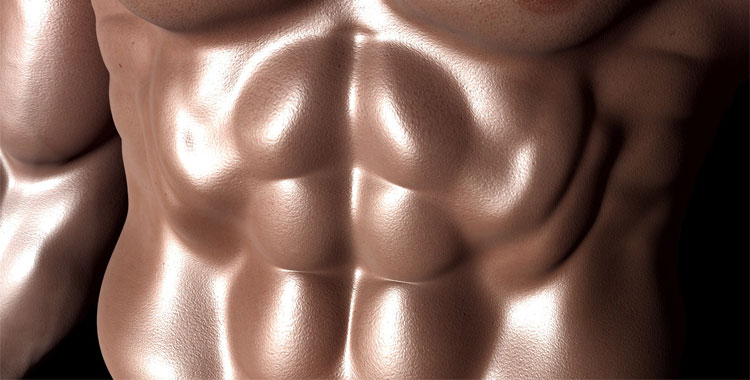
More than that and you’re bound to lose muscle mass or at least limit your capacity to gain muscle mass. If you haven’t gotten to the degree of leanness you wanted after 12 weeks of dieting, take 4 weeks “off” of your diet (continue to eat a good clean diet, but increase your calories) and then go for another dieting period.
When trying to lose fat, you’ll need to eventually lower your calories as your body gets used to your level of food intake. With carb cycling this is less of a problem since carbohydrates and calories fluctuate. But still, every 3-4 weeks you’ll need to decrease carbohydrates and calories slightly to continue losing fat at an optimal rate.
Avoid making drastic cuts. This is the reason most people lose muscle when they diet. Try dropping around 20 grams of carbs per day every three or four weeks.
For example, if you’re consuming 344 grams, 275 grams, and 206 grams, you’d reduce it to 324 grams, 255 grams, and 186 grams. If fat loss doesn’t stall, there’s no need to reduce anything though.
When trying to gain mass, there’s no set pattern of increasing caloric intake. If after 2-3 weeks you haven’t been gaining size, increase protein and carb intake by 25 grams each.
At first, add this amount to your post-workout meal. If after another 2-3 weeks there’s no change, add the same amount to your breakfast. If you’re still not gaining, add some more to your post-workout shake, etc.
Meal Breakdown
To maximize food absorption and favor muscle gain over fat gain (or to preserve muscle mass while dieting) you should ingest 6-7 meals per day. Three of those meals should contain carbs and proteins (breakfast, immediate post-workout drink, and meal 60-90 minutes after your workout).
The remaining 3-4 meals should be made up of protein, good fats, and green veggies.
The ideal time to train is around 10:00 am. This gives us the following eating schedule:
Meal 1 (upon waking up): Carbs + protein meal
Meal 2 (post-workout, around 11:00): Carbs + protein recovery drink)
Meal 3 (12:30): Carbs + protein meal
Meal 4 (15:30): Protein, fat, and green veggies
Meal 5 (18:00): Protein, fat, and green veggies
Meal 6 (21:00): Protein, fat, and green veggies
Obviously, not everybody can train at this time. For those who have to train in the evening (around 5:00 or 6:00pm), the following schedule is appropriate:
Meal 1 (upon waking up): Carbs + protein meal
Meal 2 (10:00): Carbs, protein, and green veggies
Meal 3 (12:30): Protein, fat, and green veggies
Meal 4 (15:30): Protein, fat, and green veggies
Meal 5 (Post-workout, around 18:00): Protein and carb drink
Meal 6 (21:00): Carbs + protein meal
Finally, those who have to train in the morning (around 8:00am) should use the following schedule:
Meal 1 (upon waking up): Carbs + protein meal drink
Meal 2 (post-workout, around 9:00): Carbs + protein recovery drink)
Meal 3 (12:30): Carbs + protein meal
Meal 4 (15:30): Protein, fat, and green veggies
Meal 5 (18:00): Protein, fat, and green veggies
Meal 6 (21:00): Protein, fat, and green veggies
Note: that in this last situation we use a carb and protein drink in the morning. This is because we need to get the nutrients absorbed as fast as possible so that digestion won’t interfere with workout intensity.
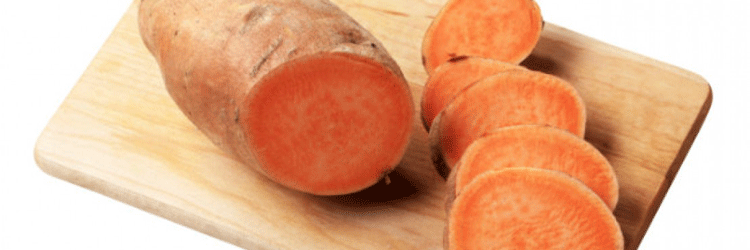
Nutrients Per Meal
Since protein is ingested at all meals, it should be evenly divided. For example, if you consume 330 grams of protein per day, you should aim for six meals of 55g each.
Allot fat to three of the six meals and divide it equally among them. So if you have to consume 100 grams of fat, this comes up to 33 grams of fat in each of the three meals.
Allot carbohydrates to three meals. About half of your carb intake should be consumed immediately post-workout, 25% in the morning and 25% around 60-90 minutes post-workout. So if you have to ingest 250 grams of carbohydrates per day, it comes up to 125 grams post-workout, 75 grams in the morning, and 75 grams about 60-90 minutes post-workout.
Food Choices
A calorie is not a calorie. Not all foods are created equal. To maximize your results, you need to put the right stuff into your body. Here’s a quick list of appropriate foods for each type of meal.
Breakfast (Carbs + Protein)
Protein sources: egg whites, Metabolic Drive® Protein, tuna, chicken
Carb sources: fruit (1-2 pieces to fill liver glycogen), oatmeal, grits, sweet potatoes, buckwheat pancakes (no syrup)
Post-Workout (Carbs + Protein)
Surge® Recovery plus rice to fill the remaining carb requirement
60-90 minute Post-Workout (Carbs = Protein)
Protein sources: chicken, fish, shrimp, lean cuts of meat, Metabolic Drive protein
Carb sources: sweet potatoes, brown rice, tomatoes, carrots, mushrooms, grits
Protein + Fat Meals
Protein sources: all cuts of meat, fish, chicken, turkey, tuna, Metabolic Drive, eggs, ham, cottage cheese
Fat sources: protein foods above, fish oil, flax seeds
Green veggies: 100-200g
The Case for Precision
Carb cycling is effective for those who do it right. And to do it right you can’t wing it. Paying attention to details will pay off. In the long run, it’ll lead to a more muscular and leaner physique.
Visit Tnation for the original article and more on training and fitness.




![Lose That Belly Fat! [VIDEO]](http://FitPhreak.com/wp-content/uploads/2016/05/2016-05-24_1212-223x145.jpg)





